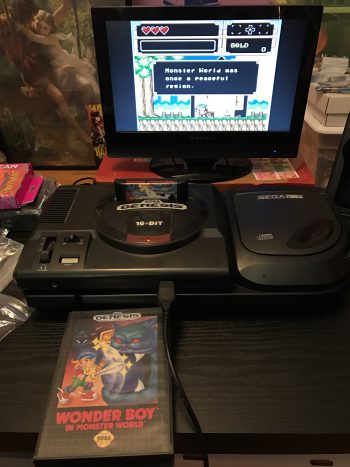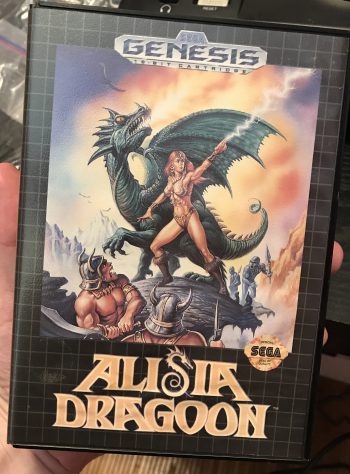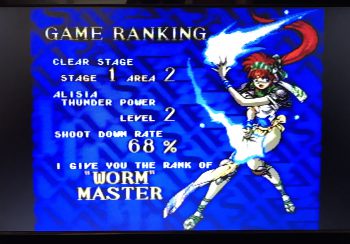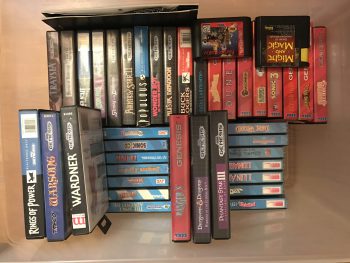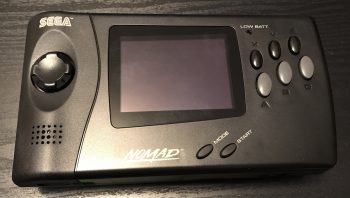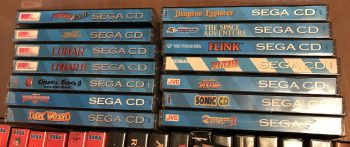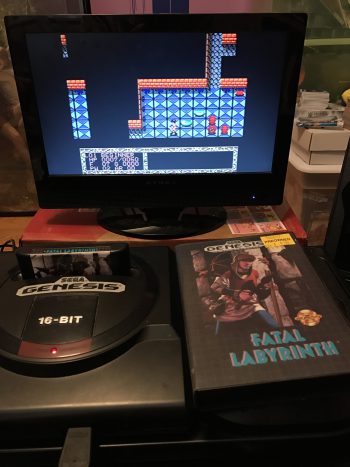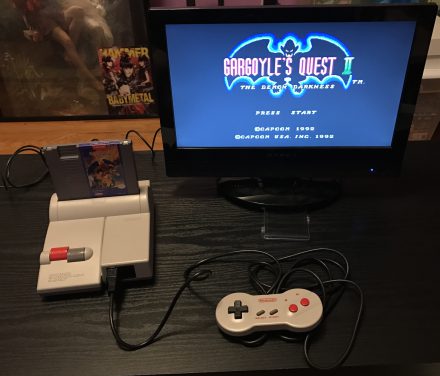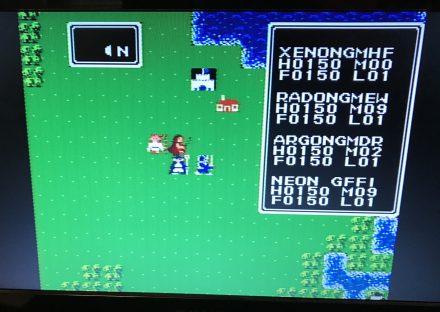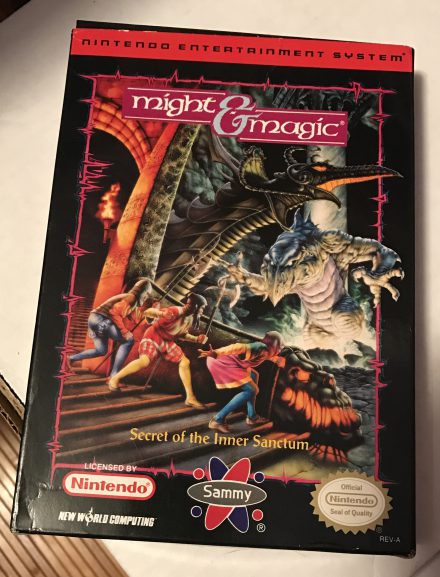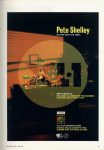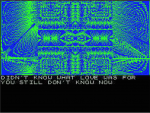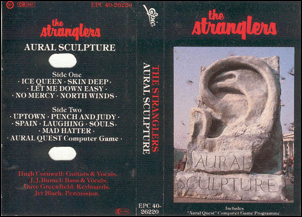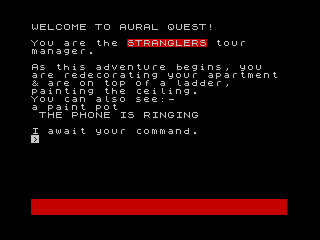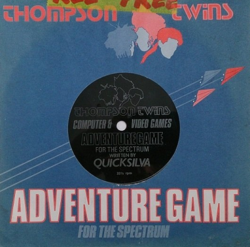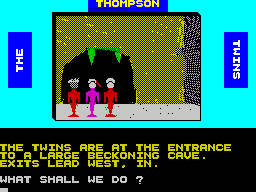Sega released the Sega Megadrive in Japan in late 1988. About a year later it was released in the US as the Sega Genesis. I can recall when the PAL version came out in Australia back in 1990, but was still so entrenched in arcade gaming that I didn’t think much of it.
When I came to America KLS owned one, and that system is still in our possession today. Usually when I do these posts I list all sorts of details about when it was purchased and how much I paid for games and that sort of stuff, but for mysterious reasons virtually all my Genesis games were omitted from my game collection database, so I can only say the bulk of my Genesis games were purchased ‘before 1996’.
The system itself is very large and very black! Ours is a first-generation, which means only RF outputs on the back and quaint additions such as a headphone jack and volume switch right on the console! I don’t have a CRT TV anymore, so I have to connect the RF signal to an LED flatscreen which isn’t ideal… but at least I get a picture! You can see me playing Wonder Boy above, which is a fantastic game. I only wish it were arcade perfect like the Master System version 🙂
The Genesis for me always felt like a strange bridge between Japanese and European gaming. Take Alisia Dragoon for instance, which is a Japanese action-platformer featuring a female protagonist that owes no small debt to Turrican. The box art for the US version is a classic in my opinion, and while (slavishly?) adherent to the game itself suggests a lot more than what’s in the box. The game itself, like all action games of that era, is brutally difficult. I thought I did pretty well in stage one but the game said I was only a ‘worm master’:
The vast majority of my collection are RPGs. KLS and I purchased some of these in 1993, but I suspect others made their way into my collection as I was reviewing for Working Designs. A few have stickers on them that show I bought them used, but many games are near mint condition, obviously bought new. I recall owning (and playing) many more games than what’s in my collection right now, which means some were traded in back during that regretful period in the late 1990s. I wonder how many and which ones?
Here’s my current collection in entirety:
There’s some giants in that box, including Phantasy Star II, III and IV, the first three Shining games, Landstalker, Wonder Boy in Monster Land, Shadowrun and Beyond Oasis. All of these games have aged well and are extremely playable today.
Amongst the very few items related to the Genesis that were in my database are the date of the last game purchased (Shadowrun for $20 in 1996) and the purchase of this item in early 1996 for $149:
That’s a Nomad, or portable Genesis. It was a spectacular failure for many reasons including high cost and dreadful battery life (about 2 hours on 6 AAs). Mine is in great condition as you can see, and I could easily sell it for more than I paid for it 21 years ago 🙂
Here’s a closer look at the blue boxes on the bottom of the collection photo above:
That’s my Sega-CD game collection. The Sega-CD was an add-on for the Genesis that was released in 1992. We have the second version released in 1993 that changed the form factor to sit alongside the main console. You can see it on the right in the photo at top. It was an exciting addition way back then since games on CD were very new and promised a lot. Sadly they rarely delivered, and the CD add-on was never much of a success. Mine still works, and I played a few of the games last weekend. I was pleasantly surprised by the fast access speed and short load times, especially compared to what I remember.
Some of my Sega-CD games incidentally are quite valuable. I should get around to the post about my priciest games one of these days…
I was recently watching a Youtube video and they commented the release of the above game, Fatal Labyrinth, was ‘immoral’ since the game itself is so unplayably bad. This gave me an idea, and I am seriously debating visiting this single roguelike game in detail in a future post. Interested?
The Genesis is a classic and important system in the history of home consoles, and was home to a great many absolutely fantastic games. Sadly I own few of them and because of my stubbornness about emulation will forever be deprived from playing them because I’ll not pay $750+ in any hurry for Slap Fight on the Megadrive! But I’m glad I have what I do, and will continue to keep the old Genesis safely tucked away until next time I set it up for some retro fun.
